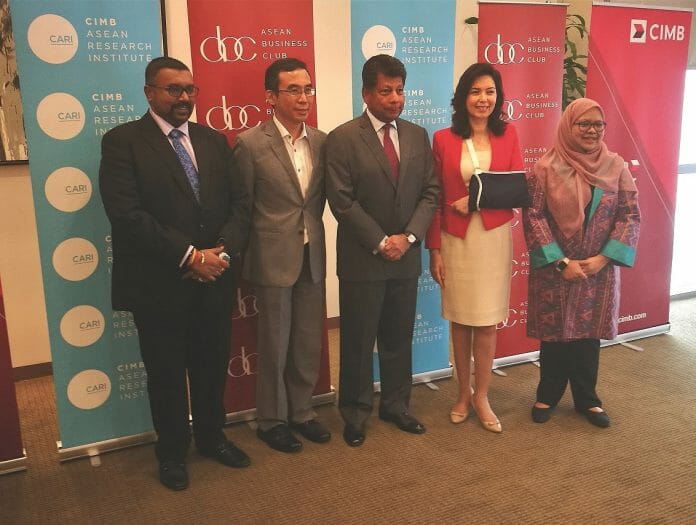Closing the Talent and Skills Gap in Asean, a roundtable discussion by the the CIMB ASEAN Research Institute in collaboration with the ASEAN Business Club brought together a panel of speakers to share their views. ASEAN needs to intensify the intra ASEAN skilled labour mobility in the near term, as well as implement urgent education reforms and workforce reskilling agenda in the long term to remedy the extreme skills deficit, accentuated by the skills demand brought upon by the rapid digital revolution.
Chaired by Tan Sri Dr Munir Majid, Chairman of Cari and President of the ASEAN Business Club, he says “We must realize there is competition. Even if we train people to be skilled, they may leave for better opportunities. Salary levels need to be looked at and be competitive to keep the talents so that the economy can move forward. When we talk about the digital economy and Industry 4.0, there is a lot of need to provide the skills. As far as ASEAN is concern, the level of development in ASEAN countries have to come up before they can feel secure to let mobility take place. However, they must realize if they do not use or accept talent from other places, they may be left behind.”
Shareen Shariza, CEO of TalentCorp Malaysia says, talent mobility and diversity is important for ASEAN however some countries are very nationalistic. She believes there is intent and aspiration for countries to adopt foreign talent and skills, but some are against it because they feel nationalistic towards it. “But not all countries are like that. In Malaysia and Singapore, they are quite open when it comes to bringing in the right talent,” she says.
A.T Kearney’s study with the Word Economic Forum on the Future of Production shows that ASEAN can benefit from Industry 4.0 and its impact on changing geographies and nature of production, but it will need to transform itself.
Chua Soon Ghee, Partner, Head of Southeast Asia of A.T Kearney says, “ASEAN will need to improve labour mobility, specifically around attracting skilled migrants that can help to increase and level up the Industry 4.0 labour base.”
Although Malaysia has embarked on the reskilling and upskilling of the workforce for Industry 4.0, the Human Resources Development Fund (HRDF) feels that there are still issues that need to be fixed when it comes to talent placements. Datuk CM VIgnaesvaran, CEO of HRDF says, “There is always a talent mismatch in the industry. By the time we recognize and train the talents and send them out, the industry changes. We need to work with the relevant industries, as Industry 4.0 needs thinkers to think of the future.”
In conclusion, a multi-pronged approach to circumvent the skills shortage in ASEAN is much needed.









